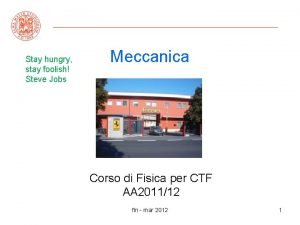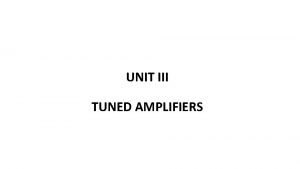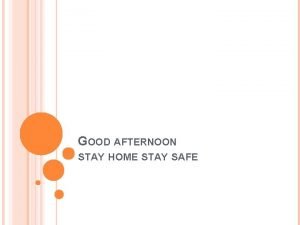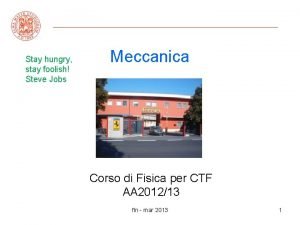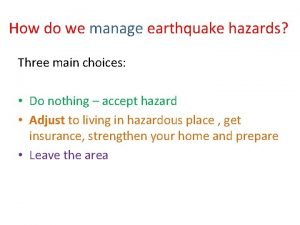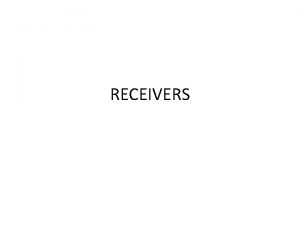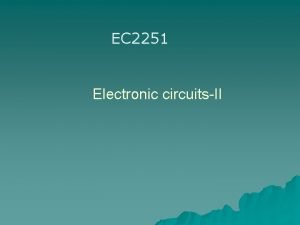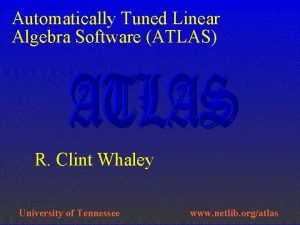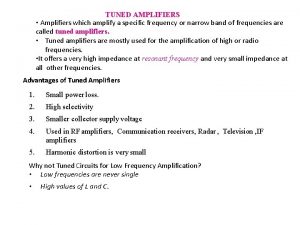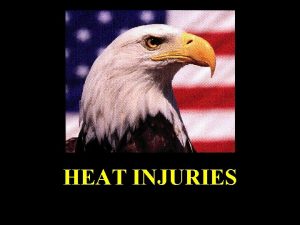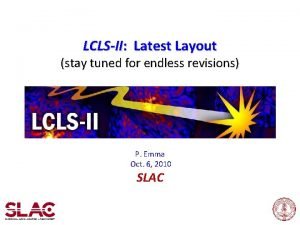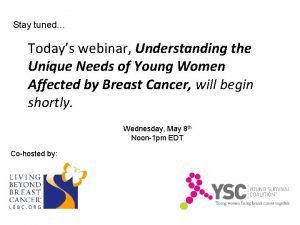2014 15 Academic Year HEAT INJURIES Stay tuned


























- Slides: 26

2014 -15 Academic Year HEAT INJURIES Stay tuned for a special section just on Fireworks.

Heat Injury CAUSES Heat from sparklers can reach 1800 degrees Fahrenheit and seriously burn the eye. That’s hot enough to melt gold! gold (More about fireworks later. ) Exposure to high temperatures, splashes of molten metal or hot sparks will damage eye tissue. Working in a restaurant or cooking at home? Be careful around ovens and frying equipment. Hot oil can splash your eyes!

PREVENTION and PROTECTION 1. Safety spectacles with side guards and face shields are the primary protectors against heat hazards. 2. They deflect heat away from the eyes. 3. For tasks that require unusual filtering of light, filter or special purpose lenses may be used to protect against optical radiation. 4. Frames can be made of metal or plastic. 5. Can be either prescription or non prescription.

COMPLICATIONS • Excessive heat can damage the epithelium (outermost layer of the cornea) which can be irreversible and require surgery. • Excessive heat can cause corneal scarring resulting in reduced visual acuity (sharpness).

Labs and Shops • Specialty lenses may be required in your lab class. • Industrial protective gear may be used in your shop class. • NEVER take chances: ALWAYS follow protocol! • Save your sight. It only takes a second!

Heat Injuries

Chemical Preventing Eye Injuries Impact Blunt Impact Penetration Heat Safety Specs Sports Glasses Spec Frames Safety Specs &/or Face Shield Welding Sun Laser Tanning Bed Optical Radiation Face Shield 100% UV Sunglasses Special Purpose Splash (Cover) Goggles Special Purpose

Fireworks INJURIES

Fireworks Injury CAUSES Fireworks cause over 2, 000 eye injuries resulting in vision loss yearly. Fireworks hazards include: 1. errant flight paths of aerial fireworks, 2. fireworks exploding earlier or later than expected, and 3. hot debris from the fireworks. BTW: Half the injuries are to BYSTANDERS! Soooo…don’t even get NEAR fireworks, let alone shoot them off yourself. (You could lose your hand too!)

Fireworks Injuries • Contusions (bumps and bruises), • Lacerations (cuts, rips, and tears), • Foreign bodies entering the eye, and • Burns… …occurred with equal frequency in firework related eye injuries. • 75% of fireworks injuries happen to boys between ages 13 and 15.

Yes, it actually happened… • 12 -year-old picked up what he thought was a dud, and it exploded in his face. He will lose one, and may lose both eyes. • 8 -year-old boy required eye surgery suffered permanent vision loss after being struck in the eye by a bottle rocket. • Sky. Sox promotions expert lost an eye and was disfigured after a firecracker exploded before it launched. Legal does not = safe. • 17 -year-old suffered severe lacerations and burns to his right eye when a fuse burned faster than it should have, exploding on the ground, hitting him in the face. The damage to his retina was so bad that doctors were forced to make the decision to remove the eye. Legal, not safe! • Other people were lighting bottle rockets and then running away for their launch. One bottle was knocked over, and it shot a 2 -year-old right in the eye. Doctors couldn’t save her eye even with 4 surgeries. The fireworks were legal in the state where they were being used. Ohio law forbids them.

OHIO LAW • Ohio regulates the use of consumer fireworks and allows ONLY sparklers, and novelties such as snakes, smoke-related items, and finger snaps. • Consumer fireworks NOT allowed to be executed in this state include shells and mortars, multiple tube devices, Roman Candles, rockets, firecrackers. • Legalities? You can also visit the Ohio Bar Association’s website (see reference links page at the end of this presentation). • Still, "No one should equate legal with safe, " Ohio Fire Marshal Mc. Namee has said. • The solution?

PREVENTION & PROTECTION Avoid personal use of fireworks, including sparklers. Do try break-and-glow sticks or other alternatives. Stay far, far away from others who ignore common sense (and the law) by using firecrackers. Tell a responsible adult if you see people using fireworks or sparklers, especially around little ones. Babysitting or around young cousins? Look out for them! If you are out of Ohio and legal fireworks are in use, take the same precautions! Just because they’re legal does NOT suddenly make them any safer!

COMPLICATIONS • Excessive heat can damage the epithelium (outermost layer of the cornea) which can be irreversible and require surgery. • Foreign debris can cause laceration (ripping) resulting in corneal scarring. • Excessive heat can cause corneal scarring causing vision loss. • Explosive force can cause contusions, retinal detachment, cataract and blowout fractures.

FIRST AID • Do NOT RUB the eye! Rubbing may cause more damage. • Do NOT FLUSH the eye or add medication. • Lacerations (rips) to any area surrounding the eye or a part of the eye need immediate medical attention! • Do NOT attempt to REMOVE a foreign body from the eye. • Go to the nearest Emergency Room immediately to have a fireworks eye injury treated!

Celebrate the Fourth… • …at a thrilling professional display? • …in the emergency room with a bloody eye?

LIGHT INJURIES

The Light Spectrum Visible light is a small fraction of the E-M (Electro-Magnetic) Spectrum. It’s often the parts we CAN’T see that can hurt us!

CAUSES of Light Injuries Ultra. Violet light (invisible rays) between 50 to 380 nano -meters -- just beyond the visual range -- has been found to be detrimental to the eye. Primary Sources of UV rays are: The Sun (short mild exposure or long term intense exposure) Welder’s Flash (short term intense exposure) Video Display Terminals (long-term mild exposure) Fluorescent, Xenon, and other Lights (long-term mild exposure) Tanning Beds High-Intensity Mercury Lamps (short-term intense exposure)

COMPLICATIONS • Short term exposure to intense concentrations of ultraviolet light can cause conditions such as pterygia (a wing-shaped degenerative condition of the conjunctiva which encroaches on the cornea), snow blindness, dystrophies and photokeratitis. • Long term exposure to ultraviolet on the lens and retina can lead to cataract formation, solar retinitis and macular degeneration. • Exposure to a laser light can lead to burns, lesions and even perforation (that is, it can poke a hole in your eye).

LASERS Laser light by either direct or indirect beams can damage the human eye. Sometimes inexpensive lasers have different power than is listed on the packing materials (especially of they are manufactured overseas where regulations are not as sturdy). So…. be extra careful, even around pen lights that are presumed to be “safe. ”

Light Injury PREVENTION • Primary protection against ultraviolet light is achieved by using filter lenses that have a maximum protection of up to 400 nanometers • Filter lenses must coincide to specific radiant energy exposure when performing tasks such as welding. • Primary protection against laser is achieved by using filter lenses that protect against the maximum power density of the laser being used.

Light Injury PROTECTION • Ultraviolet filter lenses can be worn as spectacles, goggles, shields, hoods or sunglasses depending on the purpose. • Special filter goggles MUST be worn whenever in a tanning bed. Closing your eyes does NOT work, the rays WILL penetrate eyelids! • Filter lenses can actually enhance activities. • Sunglasses come in a variety of shapes, sizes and filtering ability to protect individuals under any circumstances. They need to be rated 99 -100% AVA & UVB protection: check the tag before you buy! • “See” your eye care professional for guidance in selecting the proper filter lenses for you -- prescription or non prescription.

FIRST AID • For complications experienced under short term intense ultraviolet exposure immediately go to the nearest Emergency Room or eye care professional. • To assess complications that arise from long term ultraviolet exposure go to an eye care professional for a professional eye examination. • Immediately go to the nearest Emergency Room or eye care professional if you are exposed to laser light greater than 0. 005 watts per square centimeter (that is, anything stronger than a pen light).

Light Injuries

Preventing Eye Injuries Impact Blunt Impact Penetration Heat Safety Specs Sports Glasses Spec Frames Safety Specs Welding Sun Laser Tanning Bed Optical Radiation Face Shield 100% UV Sunglasses Special Purpose Chemical Splash (Cover) Goggles
 Stay tuned stay foolish
Stay tuned stay foolish Stay tuned stay foolish
Stay tuned stay foolish Roughly-tuned input definition
Roughly-tuned input definition Transistor
Transistor Stay tuned examples
Stay tuned examples Stay safe stay home good morning images
Stay safe stay home good morning images Good afternoon stay safe
Good afternoon stay safe Stay hungry stay foolish significato
Stay hungry stay foolish significato So stay so stay 再知己
So stay so stay 再知己 Where you go ill go
Where you go ill go In the poem to daffodils the poet is addressing to
In the poem to daffodils the poet is addressing to Your dreams stay big and your worries stay small
Your dreams stay big and your worries stay small How long is a dog in heat
How long is a dog in heat When do dogs get their first period
When do dogs get their first period Ics building uci
Ics building uci Education system in poland
Education system in poland Academic year in freiburg
Academic year in freiburg Aya exchange students
Aya exchange students Bridged t network transfer function
Bridged t network transfer function Earthquake resistant
Earthquake resistant Drawbacks of tuned radio receiver are
Drawbacks of tuned radio receiver are Stagger tuned amplifier notes payable
Stagger tuned amplifier notes payable Clint whaley
Clint whaley The miracle of language
The miracle of language Roughly tuned input
Roughly tuned input Roughly tuned input
Roughly tuned input Rf tuned amplifier
Rf tuned amplifier

